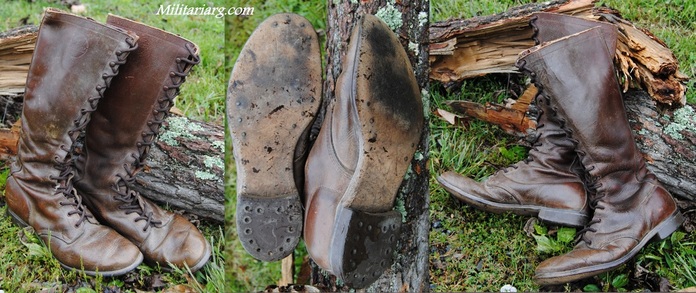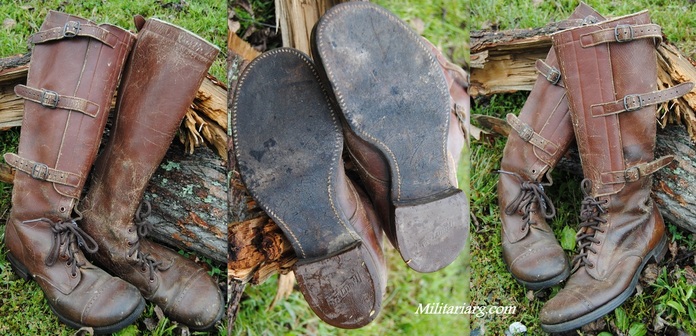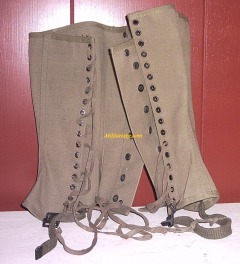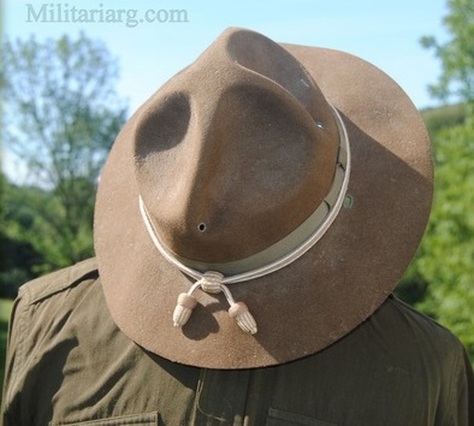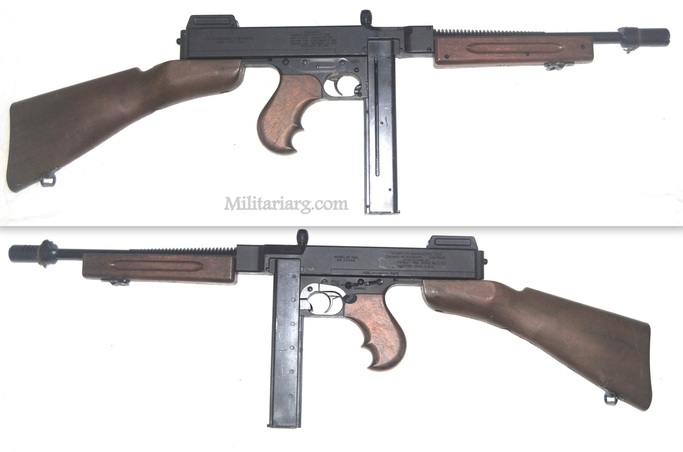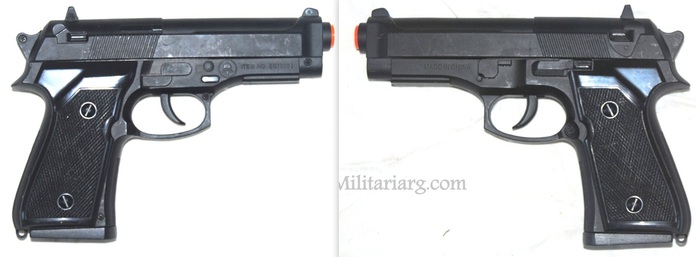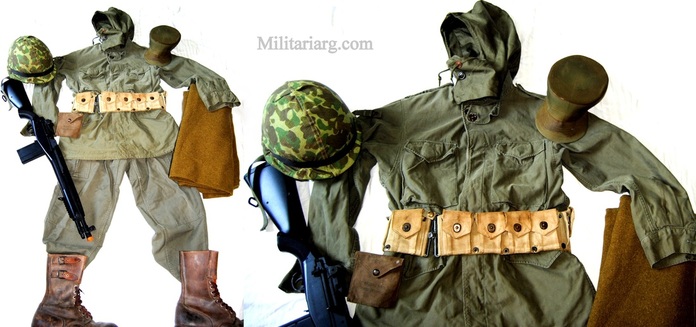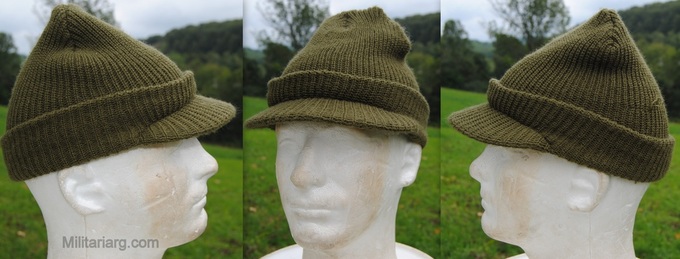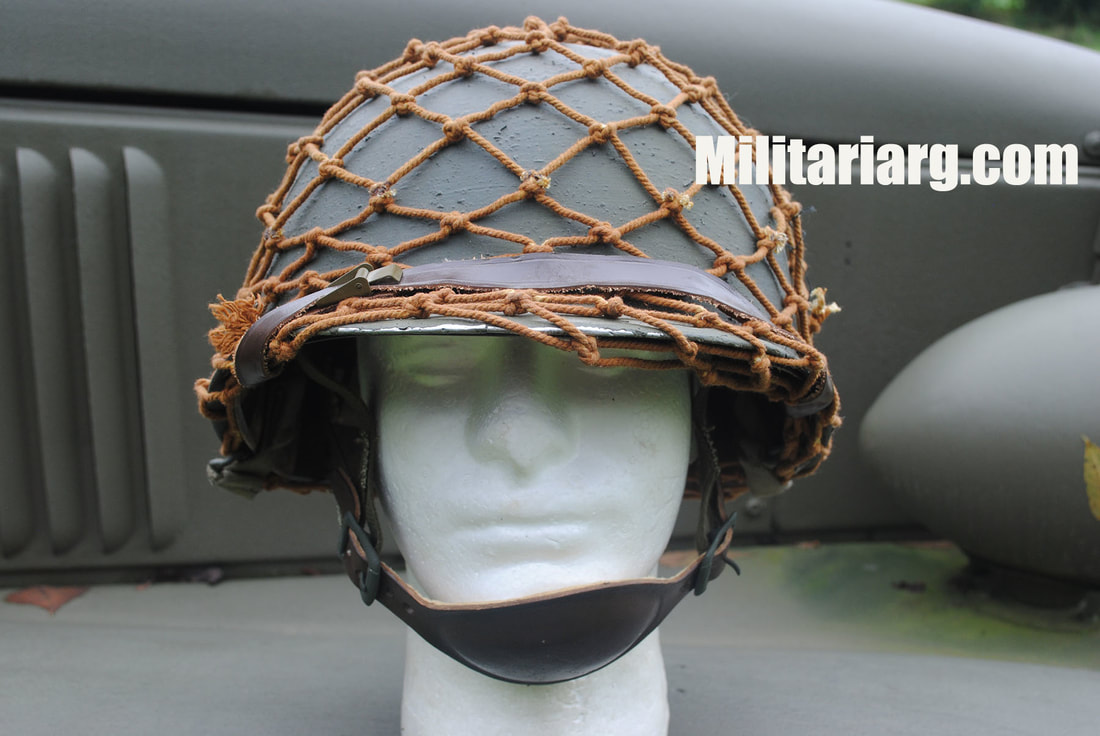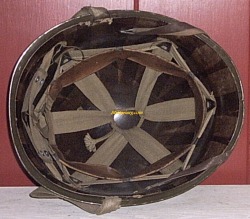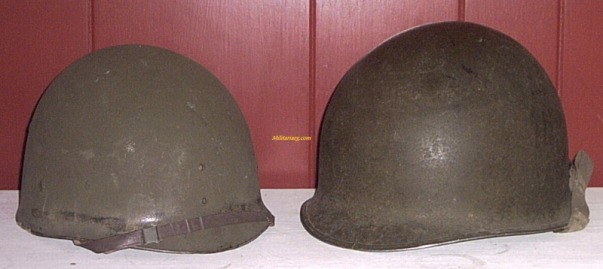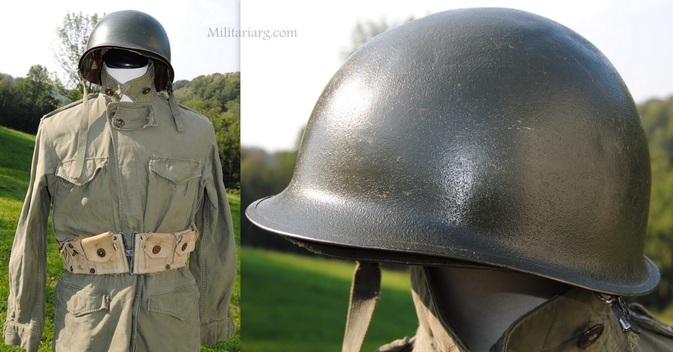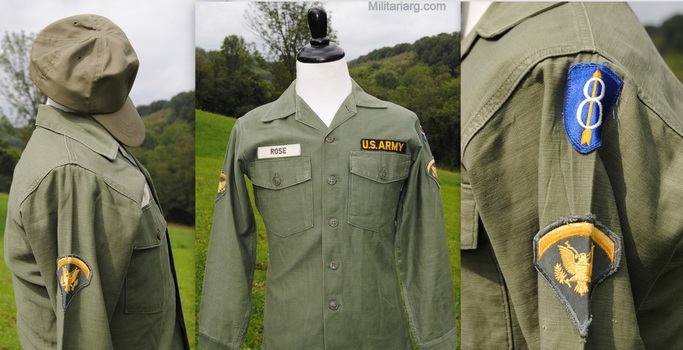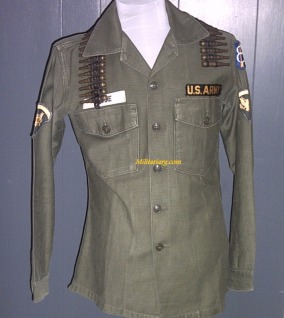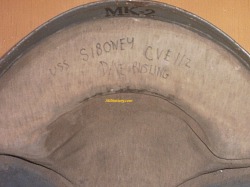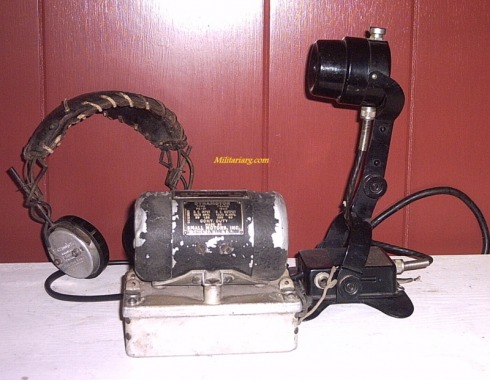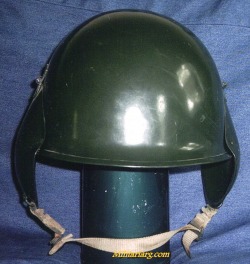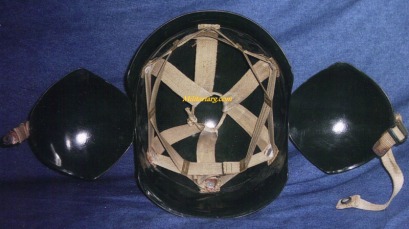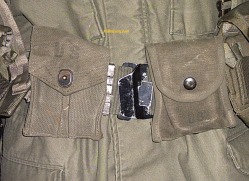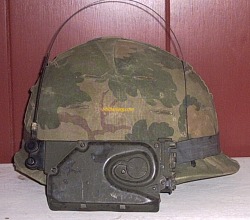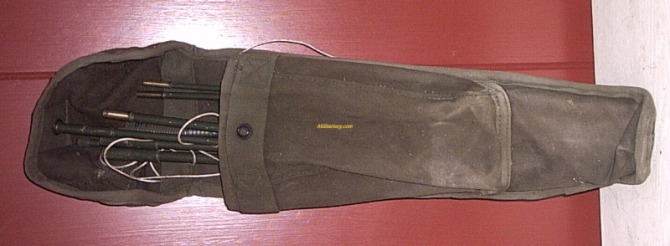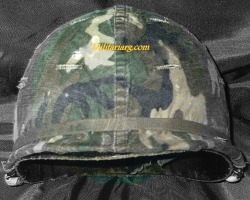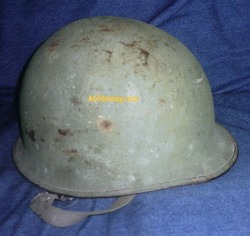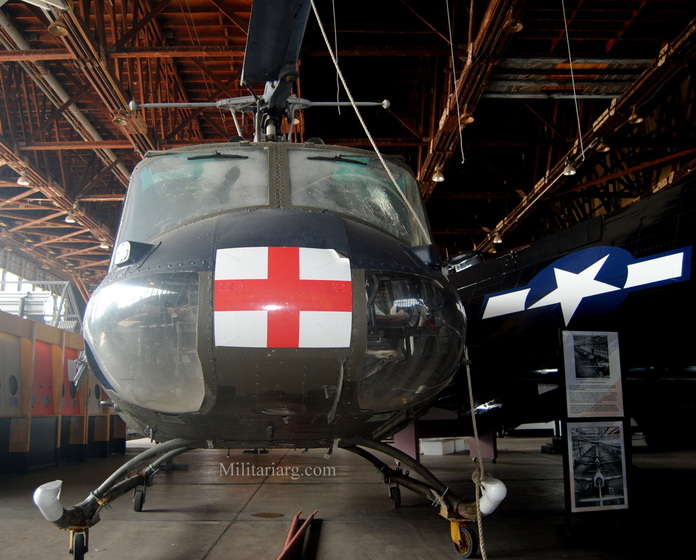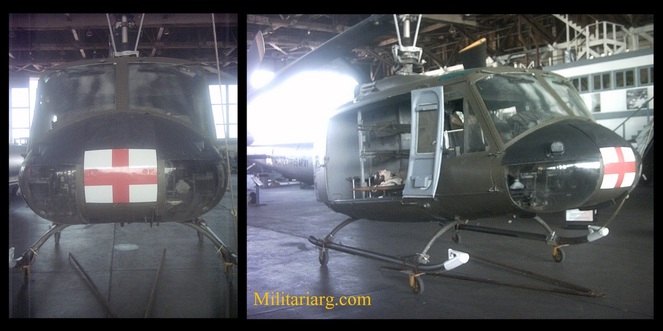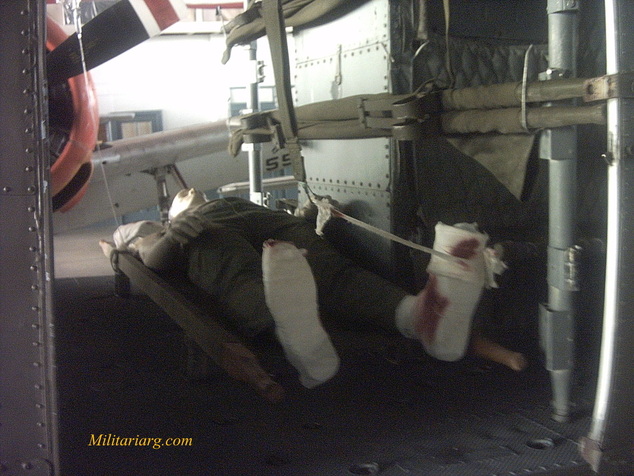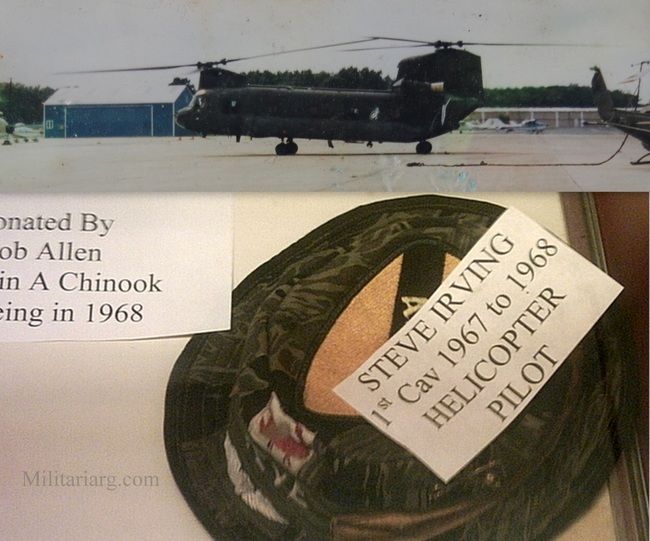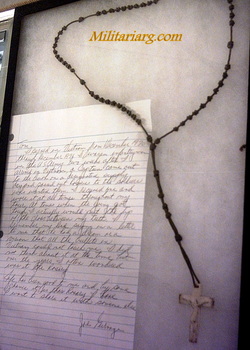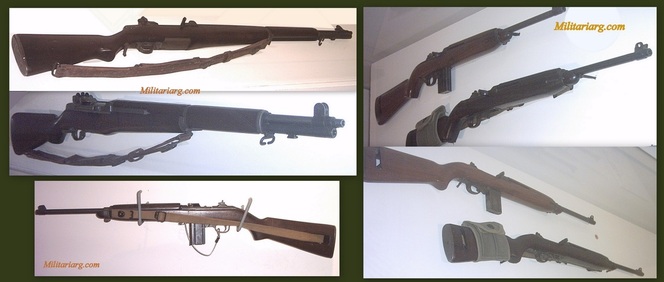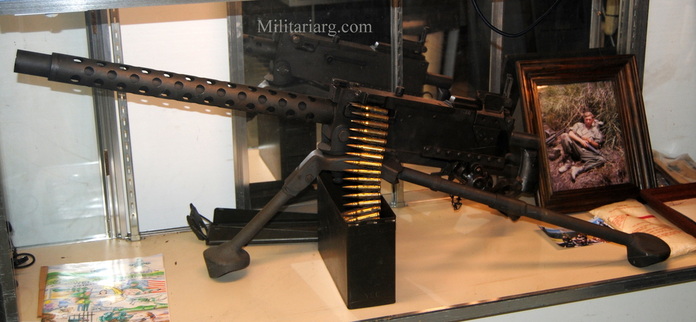Left: WWI US Indian Motorcycle. Left: WWII, Willys, Ford, MB, GPW (?)
Nose Art
Images that inspire: Nose Art Of Combat Aircraft
Nose Art is the vernacular term for original works of art painted on an airplane's fuselage its nose. History shows that this artwork spans almost a century, from World War I to Operation Iraqi Freedom; however the most notable period was during World War II and the Korean Conflict (1940s and 1950s). The practice of putting personalized decorations on fighting aircraft originated with italian and german pilots. The first recorded piece of nose art was a sea monster painted on the nose of a 1913 Italian Flying Boat. During World War I, German pilots initiated the popular tradition of painting mouths underneath of propeller spinner. Though these designs were not official military markings or insignia, military commanders permitted this artwork to boost the morale of pilots and crews. Nose Art was done to evoke humor. To taunt the enemy or to serve as a good luck charm. It also personalized a plane for its crew. When they named the plane and crated the art, they gave the plane an identity of its own. Some of the designs were painted by the crew or an "artist" would be found on base to execute the crew's design.
Currently, many pilots decorate their planesto give them a sense of individuality, using popular topics such as animals, nicknames, hometowns and patriotic symbols. Although some examples of non-regulation art can be found on the military aircraft of other countries, the phenomenon is predominantly American. Nose art is important as an historical and societal indicator over time, serving as an example of folk art or popular expression. Usually the images reflected the popular culture of the time; movie stars. Walt Disney characters, cartoon strip figures, pin-up art and wives, sweethearts and children. According to some accounts, the more distant the planes and crews were from the headquarters or from the public eye, the racier the art. Nudity in nose art was much more prevalente on aircraft based in the South Pacific than planes stationed in England.
Cape May County artist Michael DeMusz painted these replicas of Nose Art. ( United States Naval Air Station Wildwood N.J)
Nose Art is the vernacular term for original works of art painted on an airplane's fuselage its nose. History shows that this artwork spans almost a century, from World War I to Operation Iraqi Freedom; however the most notable period was during World War II and the Korean Conflict (1940s and 1950s). The practice of putting personalized decorations on fighting aircraft originated with italian and german pilots. The first recorded piece of nose art was a sea monster painted on the nose of a 1913 Italian Flying Boat. During World War I, German pilots initiated the popular tradition of painting mouths underneath of propeller spinner. Though these designs were not official military markings or insignia, military commanders permitted this artwork to boost the morale of pilots and crews. Nose Art was done to evoke humor. To taunt the enemy or to serve as a good luck charm. It also personalized a plane for its crew. When they named the plane and crated the art, they gave the plane an identity of its own. Some of the designs were painted by the crew or an "artist" would be found on base to execute the crew's design.
Currently, many pilots decorate their planesto give them a sense of individuality, using popular topics such as animals, nicknames, hometowns and patriotic symbols. Although some examples of non-regulation art can be found on the military aircraft of other countries, the phenomenon is predominantly American. Nose art is important as an historical and societal indicator over time, serving as an example of folk art or popular expression. Usually the images reflected the popular culture of the time; movie stars. Walt Disney characters, cartoon strip figures, pin-up art and wives, sweethearts and children. According to some accounts, the more distant the planes and crews were from the headquarters or from the public eye, the racier the art. Nudity in nose art was much more prevalente on aircraft based in the South Pacific than planes stationed in England.
Cape May County artist Michael DeMusz painted these replicas of Nose Art. ( United States Naval Air Station Wildwood N.J)
Left: USS Torsk (SS-423) is docked at the Baltimore Maritime Museum and is one of two Tench Class Submarine.
Right: SS John W. Brown is one of only two surviving operational Liberty Ships at Bethlehem-Fairfield Shipyard Baltimore Maryland .
Right: SS John W. Brown is one of only two surviving operational Liberty Ships at Bethlehem-Fairfield Shipyard Baltimore Maryland .
WWII Flying Leather Jacket and cap (Maryland Historical Society). Right: Vietnam Veteran items. (Forgotten Warriors Museum Cape May NJ.
Beautiful original photo from our very own wall! It shows a surplus military auction where people could acquire anything from boots to trucks, (1-1/2 ton cargo. Dodge 1934. Chevy, GMC 4x4 1935 ?). The photo is from the 1930s.
Cavalry officer from the WWII era. He has a Sam Brown-style belt. On his left shoulder is the patch shield of the China Burma India Theater (CBI). The CBI was led by General Joseph "Vinegar Joe" Stilwell and was a joint venture with China and Great Britain in China, Burma and India. The famous Flying Tigers operated in the CBI against the Japanese.
Left: Doughboy M1917 (M1917A1), Helmet from WWI era. This model was the first metallic helmet from the United States. It's an almost identical copy of the English "Brodie". Its fabrication lasted until the arrival of the M1.
Right: Teddy Roosevelt campaign hat circa 1920-1941. The cord signifies the specialty (white=infantry, scarlet with white=engineers, field artillery=scarlet).
Right: Teddy Roosevelt campaign hat circa 1920-1941. The cord signifies the specialty (white=infantry, scarlet with white=engineers, field artillery=scarlet).
Left: Possible WWI era leather boots, dispatch rider-type.
Right: Three buckle boots, possibly for the women's (medical?) corps. Firestone made many soles for different boot models.
Right: Three buckle boots, possibly for the women's (medical?) corps. Firestone made many soles for different boot models.
Left: WWII and Korean War US paratrooper-type jump boots in brown color.
Right: Two-buckle combat boots. This is the type used by the US in WWII and Korea. This case is a French version (from the Indochina era) which is almost an exact copy. The difference is the rubber sole on these. We put these boots on this page mainly for the buckles, but they are not American. They would work for reenactors.
Right: Two-buckle combat boots. This is the type used by the US in WWII and Korea. This case is a French version (from the Indochina era) which is almost an exact copy. The difference is the rubber sole on these. We put these boots on this page mainly for the buckles, but they are not American. They would work for reenactors.
Tweedie Footwear Corporation
Above left: WWII US M38 canvas leggings in a khaki color. Above right: Cavalry (yellow cord) campaign hat.
Chocolate colored shirt from US Army in the 1920s with hat from the era.
Airsoft Replicas
Colt 1911.
Thompson M1928A1 45 ACP (11.43 × 23 mm).
M3 "Grease Gun"
M14
M16
Beretta 92
US M2A2 Army Gasmask.
Philadelphia Korean War Memorial at Penns Landing.
This is a set of two WWII model EE-B-8 U.S Army Signal Corps field telephones, Leather cases are marked, one is painted "6" on it. Handsets are ribbed on the back, has a handset butterfly switch and is marked TS-9-F. Receiver is marked 1-4-44 (which I suspect to be the date it was made). This model was used from WWII through Vietnam and even into the 1980s. They were housed in leather, then canvas, then finally nylon. It had a range of 11-17 miles on a local battery and weighed just under 10 lbs. For point to point communication the phone used a hand-cranked generator to signal another phone without the need of a switchboard. When switchboard operation was used, the phone contacted the switchboard which then connected to the specific phone on the other end. Source: olive-drab.com
Above left is the jeep cap, which is basically a knit cap (wool and later acryllic) with a baseball har rim. It is sometime referred to as a "Radar Cap" for the character Radar O'Reilly who made it famous on M*A*S*H. It originated during WWII (February 1942) so that the soldiers could wear it under the helmet for extra padding and warmth. It was olive drab brown and came in sizes S, M, L and XL. It became very popular with the soldiers and some wore it as a regular hat. The originals are hard to find but there are plenty of good copies. The army continues to issue these caps but the model has some changes. It is now one-size-fits all and comes in an olive drab green, navy or black. This style has also become popular in pop-culture and can often be seen on rappers, skateboarders and rollerbladers. Info found on Wikipedia.
Next to the jeep cap are functioning replicas of the Signal Corps US Army Radio Receiver and Transmitter BC-611-F (Galvin MFG Corporation Chicago Illinois). These replicas work great and have a long range. They are ideal for reenactors. It is also known as the SCR-536 walkie-talkie (or handy-talkie) but since it uses the BC-611 transceiver, it is often called the BC-611.
The AN/PRC-6 walkie-talkie. Korean/Vietnam War Era.
US M1 Paratrooper Airborne Helmet. Schlueter Shell with Refurbished Westinghouse M1 Liner.
Above left: Battlefield relic M1 helmet found in France (Normandy beach). Above right is the liner of an M1 from WWII (see helmet below). It was made by Westinghouse.
On the left is an M1 liner and on the right is the M1 helmet that corresponds to it. Both are from WWII and are an olive drab color.
1918 BAR Browning - Colt Ammo Belt Pouches Bross & Co
M23 10 pouches ammo belt.
|
US M43 Field Jacket formed part of the US M43 combat dress. It was windproof and water proof, used at the end of WWII and all of the Korean War. WWII M1 Garand 10 Pouches ammo belt with 8 round ammunition clips each. The belt has a replica of the famous radio receiver and transmitter BC-611-F. The jacket date is June 20, 1944. The jacket has a hood that was used under the helmet. Helmet is a semi-textured olive drab from WWII, front seem with swivel bale. The liner was made by Westinghouse.
|
M1 Capac liner from 8th Infantry Division. The liner has an "S" inside which indicates "Seaman" or Seaman Paper Company. It was made in Chicago between 1942 and 1945. The helmet (1950), has a replica cover of the USMC Pacific Jungle Camouflage.
Belt Indiviudal Equipment Nylon LC-2.
M1 Gas mask Waterproofing kit canvas pouch.
Cap Insulating Helmet Liner, made by Rachman MFG. Co.
MK-2 Talker Gunner Helmet. USS Siboney CVE 112. There is writing on the insdie by the soldier who used the helmet. We gave this to an uncle from another CVE during the Korean War.
U.S.N MK-2 Helmet. This is a different version of the MK-2 with a plastic covered interior. This would seem to be a cleaner system.
US Army Signal Corps. Dynamotor Unit PE-86-F made by Air Communications inc, Kansas Missouri. Dynamotor Type PE-D1, Frame 1640, D.C INPUT (Volts 28, Amps 1.35) / D.C OUTPUT (Volts 250, M Amps 60). Cont. duty made by Small Motors inc, Chicago ILL USA. Mic Setup: Navy Types A (United States Instrument Corporation Eas Orange NK USA. Headset: Headphone Brandes, type Superior Matched Tone. This was used by the naval gunners and talkers.
U.S. Coast Guard Cutter U.S.S. Taney
USN M1 Helmet gunner. Observe the rare chinstrap made of cotton. It may be for a quick fastening. You can see the rust provoked by operating at sea. This is from the Korean War period.
Huge naval artillery shell, 3 in MK 7 Mod I, 50 caliber date 1944 WWII era. It appears to be brass and has trench art on it.
1903 Springfield M-30 Parade Rifle
US Navy Pith Helmet.
WWII. US Navy Visor Hat.
Left: US Navy Senior Officer's Hat. Right: USS MIssouri BB-63 desk model. This ship is historic because on it peace with Japan was signed and the WWII ended.
M3 Flyer's helmet which is quite possibly covered with an anti-magnetic paint.
M3 Flak Helmet. (McCord Radiator Co of Detroit MI).
M1951 "Ridgeway" field cap. This is a very famous model from Korea and Vietnam. Made by Louisville Caps Corps.
Hot Weather "Baseball Cap" made by Atlas Headwear.
M65 Field Jacket with M56 load carrying equipment. It has some items of the M1967 Modernized Load Carrying Equipment. All items are from the Vietnam era.
Boonie tan hat. Correct Cap Company, dated Feb.25,1941. Phila. Q.M.Depot
RIP-STOP Jungle Hat w/insect net, (CIN W/R Poplin). Made by METZ of California. Vietnam era.
Above left is an M65 olive drab trouser from the Vietnam War. Each soldier received 4 pairs of pants and 4 shirts. The US produced millions of pants and shirts during the war. On the right is a full dress jacket from Westpoint circa 1965.
1936 West Point Shako.
Above is a full dress jacket from Westpoint circa 1965.
US M56 Field Butt Pack.
Bandage Compress 4 inches. Sterilized - Camoufalged. Mfg by Handy Pad Supply Co, Worcester, Mass. Distr by Conray Products N.Y.
M1 Garand. Double ammo pouch.
M1916 Colt Holster. Made by Nordac MFG Corps.
M56 Water Canteen and cover. Dated 1963, made by ABCON Corporation of New Jersey.
Inside M1956 web carrying equipment there is leather holster for a Colt .45 M1911A1 pistol. On the right is the portable radio receiver AN/PRR-9 M1967 with antenna. This radio replaced the anterior ANN/PRC-6 The helmet is from the Vietnam era. It has a helmet cover with a Mitchell Leaf Camo pattern.
PRC-10 radio set bag: 10 foot long-range antenna (AT-271/PRC) and a 3 foot short-range antenna (AT-272/PRC).
Tactical Radio Rec-XMTR RT-176A PRC-10 backpack. It has the carrying harness and belt suspenders. This was the standard radio at the beginning of Vietnam until it was replaced by more modern radios, mainly the PRC-25. It was also used in Korea.
Vietnam war jungle boots M65 2nd pattern. This is absolutely one of the most prized treasures in our collection. We got it from a Vietnam vet named Ron who lives in IA. During the war he had 2 pairs of boots, this was one of them. When he returned from the war he used them a few times before putting them away. By the time he pulled them back out they didn't fit so we had the fortune of acquiring them.
M65 Cold Weather Field Coat.
M67 webbing.
Left: M1 helmet with an early RDF pattern camo. Right: Late model M1 helmet (possibly made in Canada) with possibly a Woodland camo cover from 1983. In 1983 the M1s shared duty with the new Kevlar PASGT (Personal Armor System Ground Troops)
M1C Airborne helmet and liner (1964).
Left: CVC Combat Vehicle Crewman helmet made by SIERRA Engineering date April 1966 used in amphiboius vehicles and tanks. The Radio receiver, microphone and electronic system were made by Roanwell Corporation.
Right: Combat Vehicle Crewman CVC. DH-132 Gentex US Army Combat Vehicle Crewman Helmet (1970-1980s). The radio receiver was made by Gentex Corporation and the microphone by Roanwell Co. Both helmets were used by many different countries throughout the world.
Right: Combat Vehicle Crewman CVC. DH-132 Gentex US Army Combat Vehicle Crewman Helmet (1970-1980s). The radio receiver was made by Gentex Corporation and the microphone by Roanwell Co. Both helmets were used by many different countries throughout the world.
CVCH Combat Vehicle Crew Helmet (Vietnam War Era)
SPH-4 Helicopter Helmet (Bell Inc). Microphone Dynamic M-67/AIC Acousticom. MBU/P Oxygen mask. MBU/P Oxygen Mask, Hardshell assy: Designed to remain stable and comfortable during long missions. (Gentex Corp)
1980s 2nd Generation NVG (Night Visor googles). PVS-5A/B and AN/PVS-5C mfg by ITT/VARO Box. This equipment has head straps for hands-free usage. We got this from a surplus store meant for hunting at night. It never worked but it does look nice with the collection.
16" M151 MUTT rims and Jeep lateral door or fuel can straps.
Vietnam War. Naval Air Station Wildwood Museum, Aviation Museum and Forgotten Warriors Museum Cape May NJ.
UH 1 Helicopter "Huey". This Helicopter served in Vietnam
Bell UH-1 Iroquois Huey.
Hughes OH-6A "Cayuse". Light Observation Helicopter. This Helicopter served in Vietnam 1969-1972
Stetson Hat from The Air Assault Division Calvalry Scout Pilots. (Forgotte Warriors Museum. Cape May NJ.
Radio receiver - transmitter RT-176A/PRC-10 Admiral Corporation.
Documents
Letter. (Forgotten Warriors Vietnam Museum).
Tom,
I served in Vietnam from December 1970 through December 1971. I was an infantryman in the US
Army. Two weeks after I arrived in Vietnam, a Captain came out to the bush on a designated supply
day and passed out Rosaries to the soldiers who wanted them. I received one and wore it at all
times throughout my tour. At times when the going got tough I actually would put the top of
the cross between my teeth. I remember my Dad saying in a letter to me that all the bullets in
Vietnam could not touch me. I did not think about it at the time but over the years I often
wondered was it the Rosary.
Life has been good to me and by some chance it is this Rosary I have I want to share it with
someone else.
Joe _____
I served in Vietnam from December 1970 through December 1971. I was an infantryman in the US
Army. Two weeks after I arrived in Vietnam, a Captain came out to the bush on a designated supply
day and passed out Rosaries to the soldiers who wanted them. I received one and wore it at all
times throughout my tour. At times when the going got tough I actually would put the top of
the cross between my teeth. I remember my Dad saying in a letter to me that all the bullets in
Vietnam could not touch me. I did not think about it at the time but over the years I often
wondered was it the Rosary.
Life has been good to me and by some chance it is this Rosary I have I want to share it with
someone else.
Joe _____
Guns
M1 Garand & M1/M2 Carbine. Caliber. 30 M1. Maryland Historical Society.
Thompson Submachine gun Caliber 45 m1A1. Maryland Historical Society.
1919 Browning 30-caliber Air-Cooled Machine Gun. Forgotten Warriors Museum.

















